Best Cordless Chainsaw Head-to-Head
Best Cordless Chainsaw Comparison Test – 2020
There is nothing cooler than a chainsaw. They are aggressive tools that make processing heavy timber materials effortless and enjoyable. But are cordless battery-powered chainsaws ready for the spotlight? A chainsaw requires a high output of power in order to cut efficiently, without stalling or bogging down. With the advancements in battery and electronics technology over the last few years, we were anxious to see how the cordless tool world applies that technology to chainsaws.
The benefits of cordless OPE are well known. Ease of maintenance, effortless long term storage, reduced noise, no more exhaust fumes, no more mixing fuel, just to name a few. Many pros are tired of dealing with the maintenance of gas-powered saws as well. But what kind of performance can you realistically expect from a battery-powered chainsaw? That’s what we set out to find with this latest Head-2-Head.
Cordless Chainsaw Head-2-Head Selection Criteria
Currently, there are dozens of different models of cordless chainsaws in a variety of different voltages and bar lengths. In order to limit our sample size, we determined what size saw would be most practical across a wide range of applications. We identified three main categories of users that could benefit the most from a cordless chainsaw.
The first is arborist’s or tree care professionals looking for a smaller, maneuverable saw, requiring less maintenance for limbing work or cleaning up brush piles to be chipped. The second is contractors or construction professionals who are already invested in a battery platform and looking for a saw for occasional use or home use. And finally, homeowners or landowners looking for a tool for occasional use or storm cleanup.
Based upon this, we chose to test saws with a bar and chain between 14″-16″ long. A saw of this size would be practical in the hands of most users for a variety of tasks. Likely in place of a gas-powered chainsaw in the 30-45 cc range. We also limited the voltage from 18V-62V. This gave us a sample size of twelve saws from all of the major brands and manufacturers.
Cordless Chainsaw Lineup
DEWALT Flexvolt MAX 60V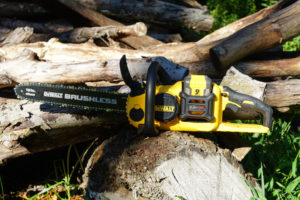
- Model: DCCS670X1
- Bar Length: 16″
- Chain Manufacturer: OEM
- Weight: 12.2 Lbs
- Battery Size: 3.0 Ah
- Tool-Free Chain Tensioner
- Automatic Oiler
- Flip Cap Oil Reservoir
- Warranty: 3 Year Limited /1 Year Free Service / 90 Day Money Back
DR Power PULSE 62V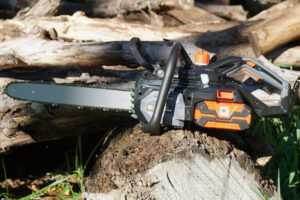
- Model: 414170
- Bar Length: 16″
- Chain Manufacturer: Oregon
- Weight: 9.9 Lbs.
- Battery Size: 2.5 Ah
- Tool-Free Chain Tensioner
- Automatic Oiler
- Screw Cap Oil Reservoir W/ Replaceable filter
- Warranty: 2 Year Residential / 90 Day Commercial
Echo 58V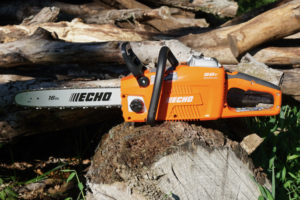
- Model: CCS-58V4AH
- Bar Length: 16″
- Chain Manufacturer: Oregon
- Weight: 13.7 Lbs.
- Battery Size: 4.0 Ah
- Manual/Tooled Chain Tensioner
- Automatic Oiler
- Screw Cap Oil Reservoir
- Warranty: 5 Year Consumer / 2 Year Professional
Ego Power+ 56V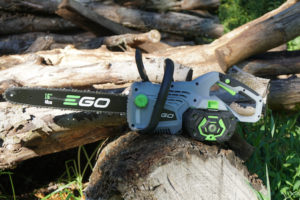
- Model: CS1604
- Bar Length: 16″
- Chain Manufacturer: OEM
- Weight: 8.69 Lbs.
- Battery Size: 5.0 Ah
- Tool Free Chain Tensioner
- Autimatic Oiler
- Screw Cap Oil Reservoir
- Warranty: 5 Year
Greenworks PRO 60V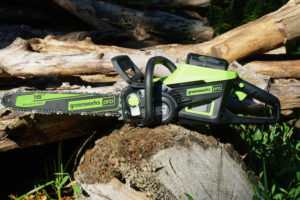
- Model: 2014502
- Bar Length: 16″
- Chain Manufacturer: OEM
- Weight: 10.0 Lbs.
- Battery Size: 2.0Ah
- Manual/Tooled Chain Tensioner
- Automatic Oiler
- Flip Cap Oil Reservoir
- Warranty: 4 Year Tool and Battery
Husqvarna 536li XP 36V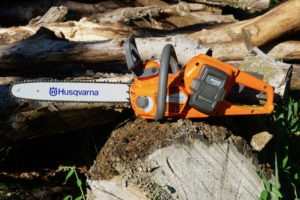
- Model: 536li XP
- Bar Length: 14″
- Chain Manufacturer: Husqvarna
- Weight: 5.29 Lbs.
- Battery Size: 9.4 Ah
- Manual/Tooled Chain Tensioner
- Automatic Oiler
- Flip Cap Oil Reservoir
- Warranty: 3 Year Residential / 2 Year Commercial
Kobalt 40V
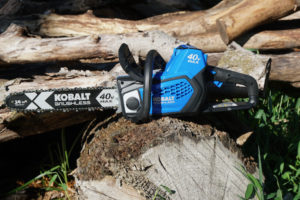
- Model: KCS 4040-06
- Bar Length: 14″
- Chain Manufacturer: OEM
- Weight: 10.9 Lbs.
- Battery Size: 4.0 Ah
- Manual/Tooled Chain Tensioner
- Automatic Oiler
- Flip Cap Oil Reservoir
- Warranty: 5 Year Limited
Makita 18V X2 / 36V LXT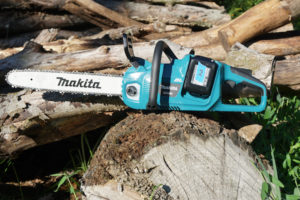
- Model: XCU04PT1
- Bar Length: 16″
- Chain Manufacturer: Oregon
- Weight: 8.3 Lbs.
- Battery Size: 5.0 Ah (X2)
- Tool-Free Chain Tensioner
- Adjustable Oiler
- Flip Cap Oil Reservoir
- Warranty: 3 Year Limited
Milwaukee M18 FUEL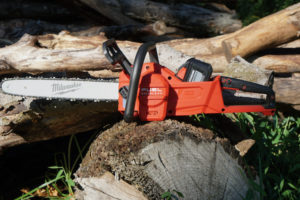
- Model: 2727-21HD
- Bar Length: 16″
- Chain Manufacturer: Oregon
- Weight: 13.9 Lbs.
- Battery Size: 12.0 Ah
- Manual/Tooled Chain Tensioner
- Automatic Oiler
- Screw Cap Oil Reservoir
- Warranty: 5 Year Limited
Oregon 40V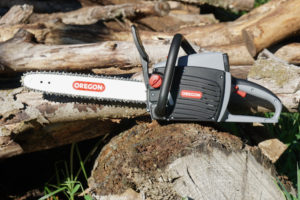
- Model: CS300
- Bar Length: 16″
- Chain Manufacturer: Oregon
- Weight: 10.2 Lbs.
- Battery Size: 6.0 Ah
- Tool-Free Chain Tensioner
- Automatic Oiler
- Screw Cap Oil Reservoir
- Warranty: 3 Years
Ryobi 40V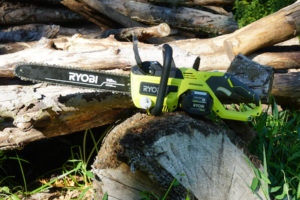
- Model: RY40550
- Bar Length: 16″
- Chain Manufacturer: OEM
- Weight: 12.4 Lbs.
- Battery Size: 4.0 Ah
- Manual/Tooled Chain Tensioner
- Automatic Oiler
- Screw Cap Oil Reservoir
- Warranty: 5 Year Limited
Stihl 36V
- Model: MSA 220C-B
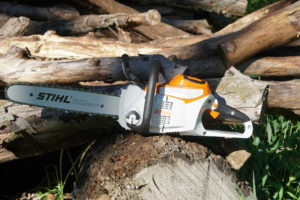
- Bar Length: 16″
- Chain Manufacturer: Stihl
- Weight: 6.4 Lbs.
- Battery Size: 7.2 Ah
- Tool-Free Chain Tensioner
- Automatic Oiler
- Manual Chain Brake
- Flip Cap Oil Reservoir
- Warranty: 3 Year Residential / 2 Year Commercial
Cordless Chainsaw Evaluation Criteria
Up until recently, cordless chainsaws were honestly kind of a joke. But the cordless revolution and improvements in battery technology have now given manufacturers the foundation they need to build truly capable chainsaws. In order to thoroughly evaluate our sample body of tools, we conducted a series of demanding tests. Each saw was ranked based upon a total of nine evaluation categories.
When determining our evaluation criteria it was important to select tests that applied to a wide range of users. Our compiled data needed to be as relatable to tree care professionals as it is to contractors and home/landowners. Testing each saw to its limit was also critical in order to clearly establish the line that separates the capability of a cordless saw from a traditional gas-powered model. It is also worth mentioning that all of our tests were performed on hardwood trees as they are common and widely available throughout the Northeast.
Bearing all this in mind, we settled on the following categories:
- Run-Time Cutting
- Speed Cutting
- Torture/High Demand Cutting
- Tool Size and Balance
- Weight
- Features
- Ergonomics
- Decibel Output
- Price
In addition to these ranked categories, we wanted feedback from true professional users and reached out to a local tree company to be a part of the testing. They were on-site with us for the day of testing and brought their bucket truck. We put each saw in the hands of an experienced tree pro and put them to work limbing up a standing dead ash tree. This is a real-world application that has always been done with a gas-powered saw. Performing this task gave us valuable feedback in determining if any of the battery-powered tools were ready for demanding professional service.
Cordless Chainsaw Run-Time Test
Run-time testing seems pretty straight forward, right? Put a battery in the thing and just cut some stuff. Our goal is to truly test the limits of these tools and run-time testing was a premier opportunity for us to do this.
Our run-time test consisted of inserting a fully charged battery in each saw with a factory sharpened chain and then proceed to cut as many crosscut slices through a tree length log as possible on a single battery charge. Each saw was filled with Stihl Woodcutter bar and chain oil prior to beginning the test and chain tension was also set properly.
The test logs were Maple, all approximately 13.5″ in diameter. The logs had sat off the ground seasoning for approximately two years. Because no tree is a perfect column, we had some variation in diameter. The average diameter of the logs calculated out to 13.6875″.
Maple is not the hardest species of wood out there, but these were some BIG logs. In fact, they were likely bigger than what most of these saws were designed to cut, which is why we chose them. This test forced the saws to work hard, and it showed. In order to keep things uniform, we kept the same two test cutters for the entire test. Both operators were instructed to perform five cuts at a time and then pause for 25 seconds to allow the batteries a brief relief and avoid thermal overloading.
First Place: Ego
Ego crushed this test, plain and simple. The Ego saw performed a total of 31 full depth cuts and then a partial cut of 4.25″ on the 32nd cut before dying. Ego has a rock-solid battery platform, and this test highlights that.
The electronics of the Ego saw are extremely efficient and transfer the power of their 56V ARC technology seamlessly to the 16″ bar and chain. The Ego was the first saw we tested and as we watched the stack of cookies rise, we started to worry that we might run out of test material. Our crew did mention that after the 15th cut, there was a change in cutting speed and the tool seemed to slow down slightly, but kept going.
Second Place: Milwaukee
The Milwaukee FUEL saw was the lowest voltage tool of the day, but still shined as a cutter. The FUEL completed a total of 21 cuts with a partial depth of 9.25″ on the 22nd. The proven M18 platform with the massive 12.0 Ah battery did very well in our testing. However, this saw did experience a battery overload at the 18th cut. We had to remove the battery, let it cool down for almost ten minutes, and then continue the test. The Milwaukee saw uses a slower chain speed compared to some of the other saws, but delivers a ton of torque and power while cutting.
Third Place: Greenworks
The Greenworks Pro 60V saw is no stranger to the Tool Box Buzz crew. It performed a total of 21 full cuts and maintained constant chain speed and power throughout. Overall our test cutters agreed that it had excellent power and was a “Top Cutter”.
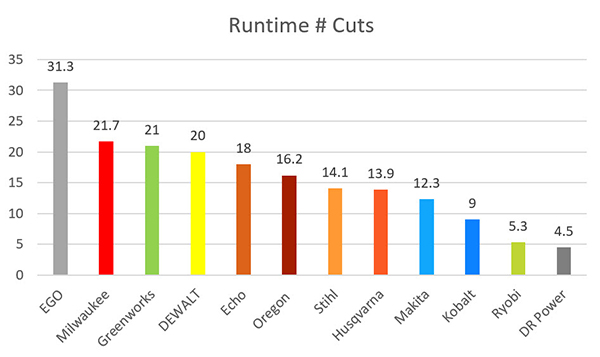
Learning to Cut Differently
While evaluating run-time, our test cutters learned that operating a cordless chainsaw is drastically different from a traditional saw. A gas-powered saw will typically allow you to lean into a cut and put extra leverage and force on the tool. A gas-powered motor will power through this while bogging down without incident. However, an electric saw will shut itself down when encountering extreme resistance to prevent damaging the motor. Our operators had to allow the saws to do the cutting and hold back from leaning on them too much.
Of the saws we tested; Makita, Stihl, and DR Power had issues with stalling out and had to be reset to continue cutting. The Stihl in particular had to be reset, battery removed, and cooled off, several times to continue the test.
Speed Cutting Test
Published chain speeds, RPM ratings, manufacturer cutting claims can all get pretty confusing. So we made it a priority to see just how fast our cordless saws could perform a cut in a piece of hardwood. A seasoned length of Ash was selected to perform the speed cutting test. Our sample log measured out to an average diameter of 11.02″ based upon measurements taken before the start of each test cut.
We chose to keep the same operator for the entire test to maintain consistency. Our test cutter then performed three timed cross cuts as quickly as the saw was able to. After the results were recorded, we reset and performed the test a second time. The average of the two times was calculated and used to rank each saw.
First Place: Echo
One of the test cutters summed up the Echo perfectly; “This thing feels like a chainsaw!” The Echo saw powered through the speed cuts with an average time of 44.5 seconds. Echo’s 58V system uses a slower chain speed but delivers a lot of felt torque in the cut. This balance of speed and power allowed the Echo to chew through our test material quickly without bogging down or dropping in speed.
Second Place: Stihl
Stihl is a big name, if not the biggest in the chainsaw world. Their reputation is built upon their solid construction and professional-grade engineering and features. This lineage really showed itself during out speed cut testing. With an average cut time of 48 seconds, the Stihl had zero issues cutting through the 11″ Ash log. While the Stihl struggled with the larger diameter run-time log, the smaller log used here, along with Stihl’s very aggressive profiled chain yielded impressive results.
Third Place: Greenworks
With an average cut time of 50.2 seconds, Greenworks continued to shine as a “Top Cutter.” The Greenworks PRO 60V saw’s performance in the speed cutting test is an outstanding example of a tool that was built from the ground up as a cordless chainsaw.
Cordless Chainsaw Torture Test
In order to break down a large round of wood to a more manageable size, chainsaw users will often perform a rip cut or “Noodling” cut as it is more commonly referred to as. We selected a noodling cut as our torture test due to the fact that it greatly tests the full powerband of the cordless saw. A noodling cut is performed parallel to the grain of a full log round.
What makes it so difficult is the chain has to pull the long-stranded chips through the entire kerf length of the bar and chain. These long-stranded chips resemble curly noodles, hence the name Noodling. Traditionally a user would need a larger and more powerful gas-powered saw to perform such a cut.
For our test, twelve pre-cut rounds, of wet Red Oak, were placed standing on a block and cut parallel to the grain. Our rounds were each twelve inches long and averaged 16.78″ in diameter. The toughness of the grain structure of the Red Oak and the moisture content of the wood placed a huge demand on our saws.
We chose to make this test a Pass/Fail evaluation mainly because we were unsure if the saws would be able to complete the test. To our surprise, almost every tool passed the test! The only saw which failed to complete the noodling cut was the Milwaukee M18 FUEL. During the test cut, the Milwaukee jammed with sawdust and noodle strands completely binding and seizing the blade. The saw had to be disassembled and cleaned out before it was functional again.
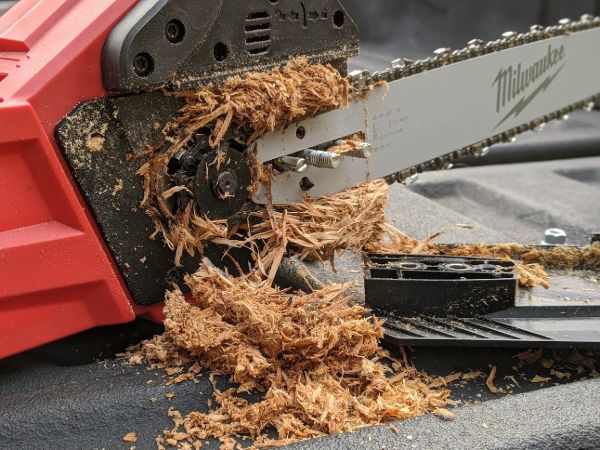
The performance of these battery-powered saws during our torture test was extremely impressive. It showed us the benefit of modern electric motors and their ability to maintain a constant output regardless of demand.
Weight
We ranked our saws based upon the bare tool weight of each model. Based upon the published bare tool weights we ranked the saws as follows:
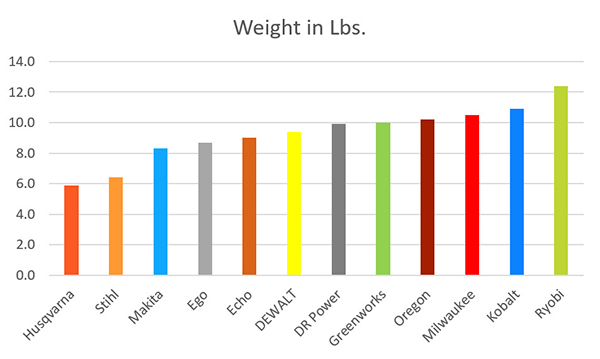
Overall Size and Balance
Numbers alone do not always tell the full story of the overall feel of a tool in hand. We chose to include size and balance in addition to weight during our evaluation. Some of the saws did a great job of balancing this increased weight and size while others did not. One of our test cutters remarked that operating some of these saws felt like “driving a big Cadillac boat like my Grandma used to drive”.
Our professional tree cutter felt that overall size and balance was one of the biggest factors for him when deciding if he would take one of these saws up in the bucket. If the saw was bulky and unwieldy, then it would be an absolute no-go for them to even consider.
First Place: Stihl
The Stihl felt like a compact professional-grade tool in the hands of every user. The overall size and balance is excellent and felt more like a chainsaw with a battery in it than a battery-powered chainsaw.
Second Place: Husqvarna
Husqvarna is the other biggest and most well-known name in the chainsaw world. The 536li XP felt nimble and balanced in hand. It’s lightweight and compact design makes it a true professional-grade tool. Our tree cutter stated that the Husqvarna had “great balance and lightweight in hand”. He felt that it was the most realistic choice of all the saws for use in a bucket or tree due to the weight.
Third Place: Makita
The Makita XCU04PT1 saw offered a great combination of weight and balance. The Makita 36V two battery system places the battery packs higher up and centered on the saw. This cuts down on the overall length of the saw body and streamlines it as well. Much like the Stihl and Husqvarna, the Makita saw balanced similarly to a traditional gas-powered saw and was easily controlled by our test crew.
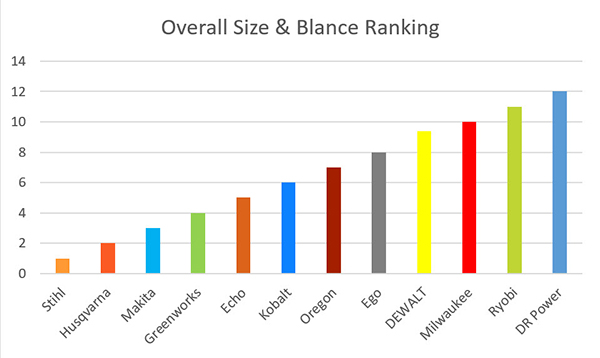
Cordless Chainsaw Features
Our saws ranged from basic and Spartan in terms of features to jam-packed. We examined each saw and compared features such as manual chain brakes, chain tensioning systems, bar oil fill cap design, onboard tool storage, bumper spikes or felling dogs, and many other areas as well. Based on this detailed comparison, we were able to rank our tools as follows.
First Place: DEWALT
The DEWALT Flexvolt saw has an outstanding set of features that make it very user friendly. The manual chain brake, in particular, stood out to our crew as a well thought out and executed safety feature. The brake lever had an excellent contour to it with very short travel to engage and disengage. DEWALT’s tool-free chain tensioning system was also the most user friendly. As a right-handed operator, I could easily hold the saw by the forward handle in my left hand while using my right hand to adjust the chain tension. All of the controls featured high-quality, flip-down levers that are easy to use and store securely. The flip cap design of the bar oil reservoir was also extremely easy to use. One area of improvement for the saw would be a set of steel bumper spikes as opposed to the current molded plastic ones.
Second Place: Oregon
The Oregon name is well known as a manufacturer of high-quality bars, chains, and other forestry products. But the CS300 chainsaw was a bit of an unknown surprise to our crew. Having never tested a tool from Oregon before, we were pleasantly surprised by this mighty monster. Oregon saw was packed with features that were very clearly designed by chainsaw people. The first of which was the Oregon Self Sharpening system and 91PS056X chain. Oregon included a self-sharpening system in which the user simply pulls upwards on a control lever for 3-5 seconds while running the saw to automatically sharpen the chain. The lever lowers a contoured sharpening stone down onto the chain and sharpens as it runs. This feature makes the often foreboding task of sharpening a chain effortlessly. The chain is proprietary and the sharpening stone will only work with the special chain. Oregon also has excellent bumper spikes and a responsive chain brake as well as a tool-free chain tensioning system.
Third Place: Stihl
It comes as no surprise that a professional-grade tool like the Stihl includes professional-grade features as well. Stihl includes an inboard clutch design along with steel bumper spikes and chain catch with the MSA 220 C-B. The tool-free chain tensioning system is very user friendly. The finger rotary dial design for adjusting tension was found to be slightly less intuitive than the DEWALT Design.
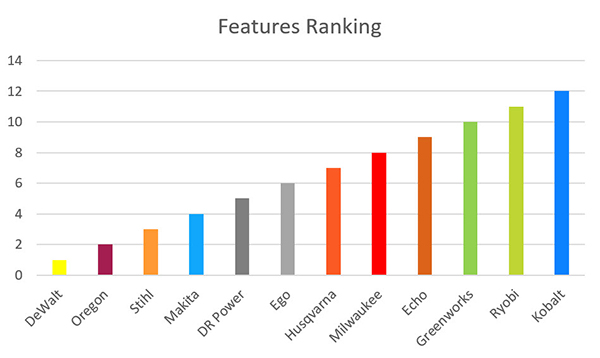
Of all the saws that were tested, Kobalt was the only model to not feature a manual chain brake lever and it’s placing in this category reflects that. The Kobalt also requires a tool to tension the chain. Our crew found an overwhelming preference for saws with a tool-free chain tensioning method as opposed to a traditional tooled system. For saws of this class, tool-free seems to make the most sense.
Overall Ergonomics
The term ergonomics gets thrown around a lot and is completely user-dependent. Bearing that in mind we ranked our tools in terms of ergonomics based upon the way they worked with us during use. The areas we focused on were handled angles, grip textures, control locations, and felt vibration. All of these features are worth considering to find the tool that is comfortable to the user.
First Place: Husqvarna
The Husqvarna saw was designed for all-day professional use. The contoured angle of the handles was comfortable as well as made the controls easy to reach. The saw featured a simple push-button power switch as well as a manual chain brake, and grip tang safety release. These controls all worked smoothly together in hand. There is also little felt vibration with this saw and no hot spots on the grips.
Second Place: Stihl
The compact body design of the Stihl along with ergonomic controls makes this one of the most comfortable tools in hand. The Stihl features a push-button safety release on the left side of the rear grip as opposed to an on/off switch, this button is easy to reach and unobtrusive during use. The ease of battery access and quick change were exceptional on the Stihl.
Third Place: Makita
The Makita saw followed the same design path as the Husqvarna, with a push-button on/off switch and a grip tang safety release. This simple feature alone was found to be a favorite among our testing crews. The tree care pros also greatly favored this system and found the Makita to be extremely similar to their current gas-powered saws.
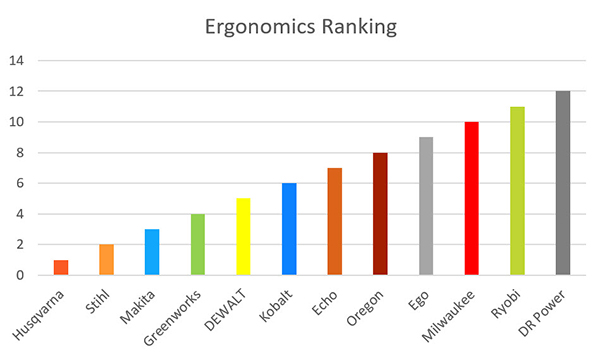
Decibel Output Rating
One of the main benefits of cordless chainsaws and cordless OPE in general is the lack of noise. But just how quiet is a cordless chainsaw. To test this, the saws were placed on a concrete slab open garage space in the same general area. An average Decibel rating from each saw at approximately arms length away. The same rough distance as users ears would be from the tool during use. The decibel rating was captured during the loudest rev-up phase of the tools, similar to how they would perform while cutting.
Husqvarna metered the lowest at 74.4 and DEWALT followed closely behind at 74.5. The majority of the saws fell between 74.5 to 76.5 decibels, Greenworks was the loudest saw at 80.1 decibels.
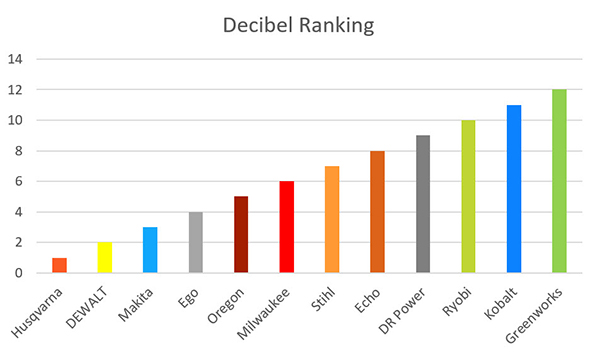
All of the saws tested fell within the OSHA safe hearing level standards and are drastically quieter than a comparable size gas-powered saw. For prolonged use, a set of hearing protection is a good idea in my opinion. I found the pitch of the electric motors to be annoying after extended use. Similar to listening to a miter saw all day.
Price
Using a host of different online vendors and local dealers, the saws were ranked based upon the current market price on a bare tool, at the time of this article. The bare tool price is the best way to rank a comparison such as this because many of our manufacturers sell their saws as a la carte system. They allow the individual user to select the battery packs and charger right for them. Such as Stihl, Husqvarna, and Oregon.
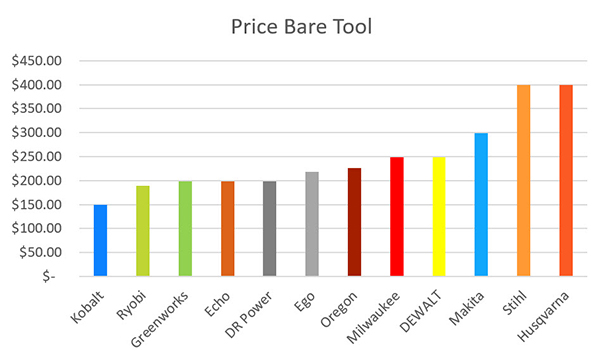
Looking at bare tool prices, we see three of our top-performing saws all the way at the bottom. This wide difference in price is a direct reflection of a truly pro-grade tool as opposed to a residential or homeowner grade tool. The Kobalt will not be capable, or expected to perform, to the same level as the Husqvarna or Stihl. Stihl is also unique in that they do not offer online sales. In order to buy a Stihl chainsaw, you must visit a Stihl dealer. This dealer experience is a trademark of the Stihl brand and is something that TBB Crew Member Jeff Williams discussed in a previous review.
Below is some “Buy Now” links to purchase some of the saws featured in this Head-2-Head from our sponsor at Ohio Power Tool.
Buy Now From Our Sponsored Retailers
Best Overall Value Cordless Chainsaw
Echo CCS-58VA Chainsaw
Of all the cordless chainsaws featured in this comparison test, the Echo stood out as a tremendous value backed by outstanding performance. The Echo was our fastest cutter and ranked in the top 5 for run time and weight. But more importantly, it tied for third for the price as a bare tool. The echo has a solid heft to it that makes it feel like a traditional gas saw in hand but is still relatively light. Because it cuts at a lower chain speed with higher torque, the 58V Echo chewed through every species of wood we threw at it with no issues.
While a little bulky for a tree climber or bucket saw, the Echo is an excellent saw for firewood cutting or general clean up around a home or property. Echo also gives users the option of online ordering as well as the local dealer experience or purchasing from a large home center. The CCS-58VA is part of a larger lineup of cordless OPE from echo and would serve any homeowner well as part of a complete system of products.
Best Cordless Chainsaw Results – Winner Stihl
Based on our evaluation criteria, each saw was ranked and a point value was recorded. These scores were then added and a final ranking order was determined. The lower the score, the better the placement of the tool. Based upon this, Stihl took top place overall with 36 points. DEWALT and Husqvarna tied for second place with 41 points. Makita followed close behind with 42 points and was a solid performer.
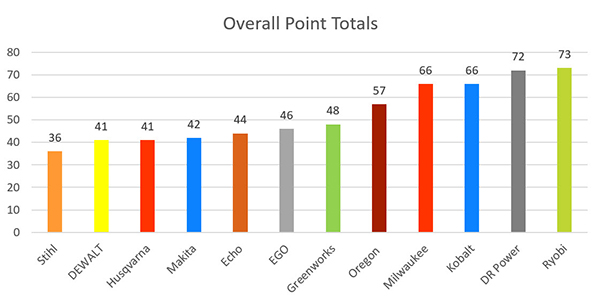
Overall our test saws established themselves into three categories. Power tool companies that made a cordless chainsaw, chainsaw companies that designed a battery-powered saw, and battery-powered companies that built a chainsaw around their platform. Each individual tool had its own strengths and weaknesses and their performance was clearly based upon their battery system. Overall our crew was extremely impressed with the power and capabilities that these cordless saws have to offer.
If you are currently invested in the battery platform, then you likely can’t go wrong with picking up a matching chainsaw. If you are considering purchasing a saw and aren’t invested in a platform, take a look at the full range of tools from each manufacturer when making your decision. Cutting a tree a few seconds slower is nothing compared to the expense of investing in multiple battery platforms.
For the tree care pros out there, a battery saw is worth looking at as well. Charging a battery is way easier than filling a gas can and less messy. More importantly, a battery-powered saw goes from on to off with the flip of a switch. While expensive, the professional-grade tools highlighted in this test are extremely capable and powerful. A pro will be surprised at how often they would find themselves reaching for a battery-powered saw over a gas-powered model.
So whether you are a backyard lumberjack, a rugged tree cutter, or an eco-conscious cannibal from Texas, a cordless chainsaw is likely a great option for you.
Best Cordless Chainsaw Video Review
About the author
32 Comments
Leave a comment
Disclosure
Product reviews on this site contain our opinion of a product or service. We will always strive for objectivity and transparency in our reviews. Our goal is to provide readers with honest, objective information based on our own experiences. We never have and never will accept payment in exchange for a positive review. Many of the products that we review are provided to us for free by a manufacturer or retailer. In some cases, we also have advertising or affiliate relationships with manufacturers and retailers of products and services we review. For additional information please visit our additional disclosure policies.












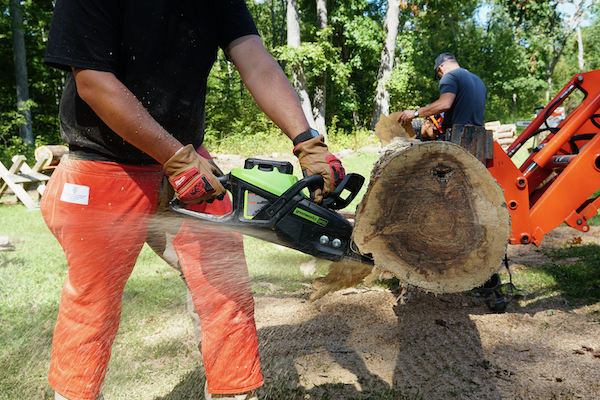
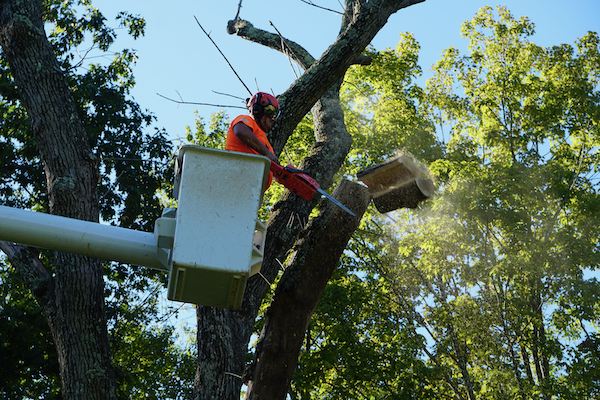
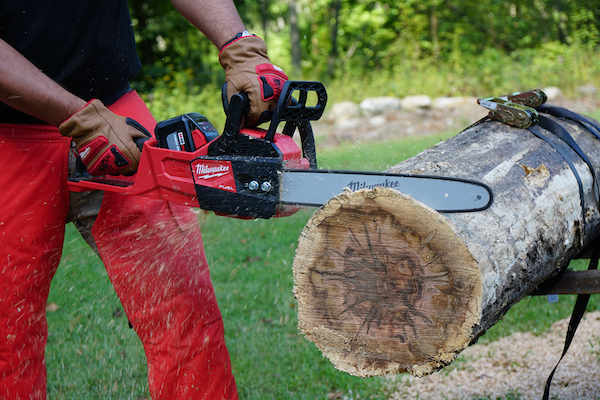
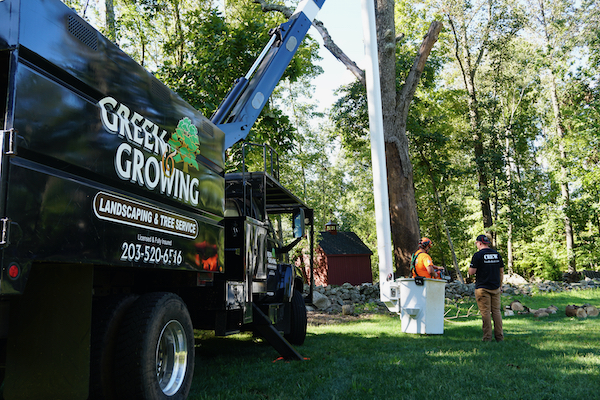
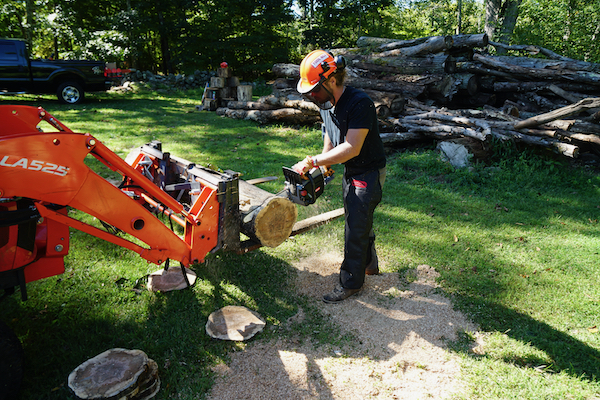
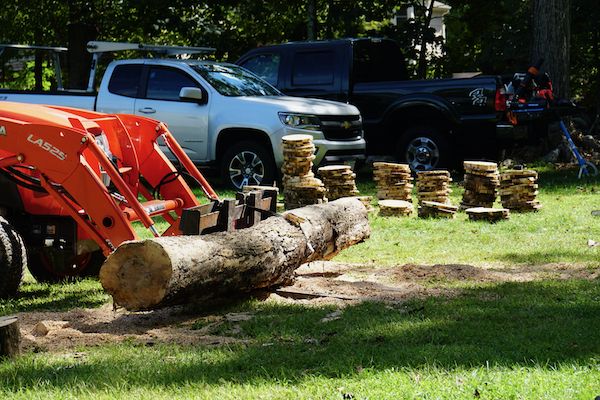
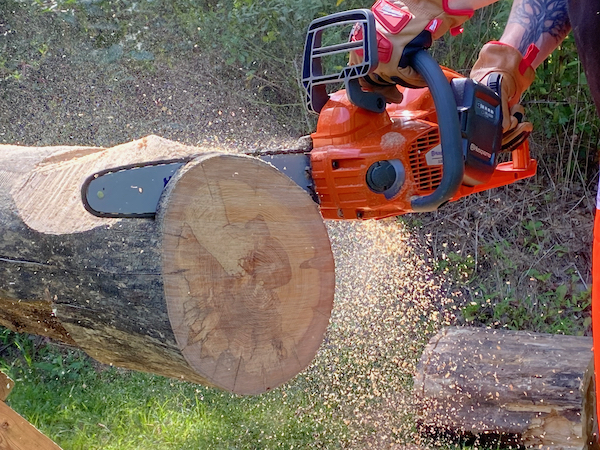
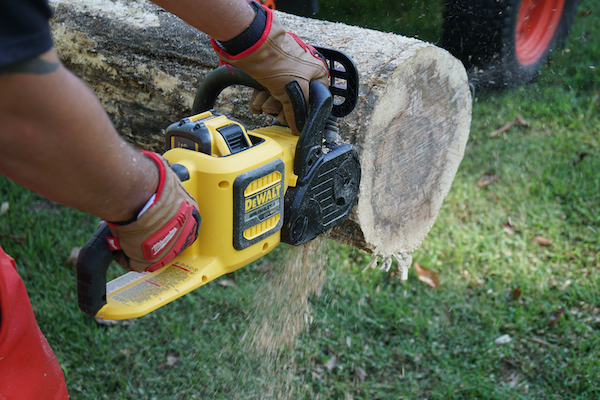
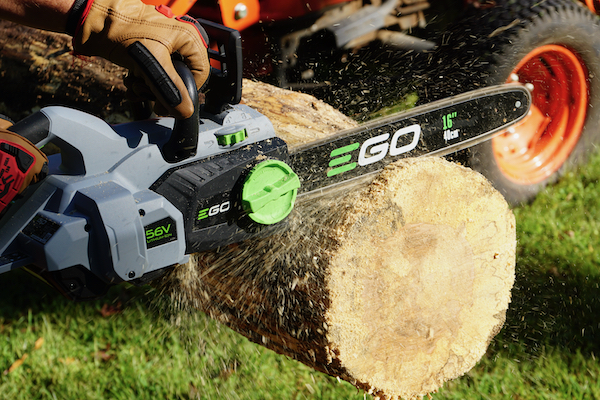
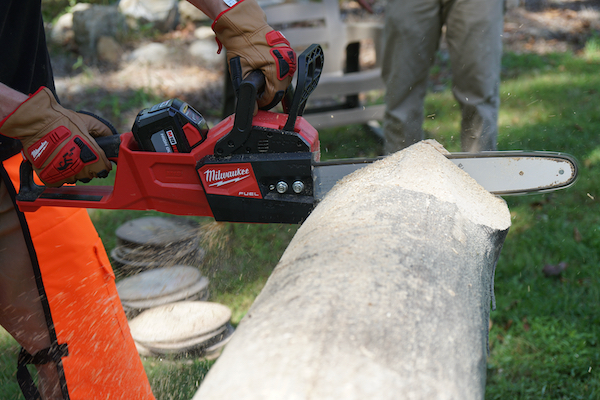
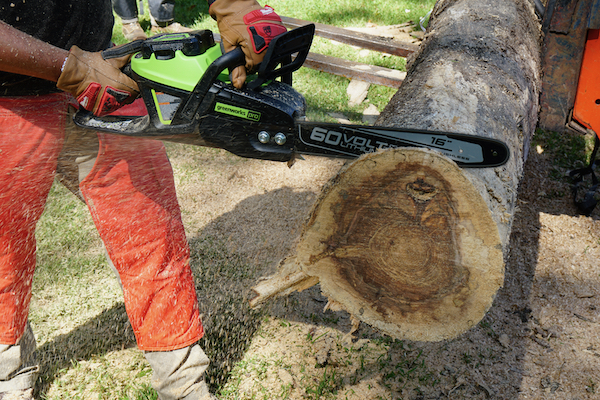
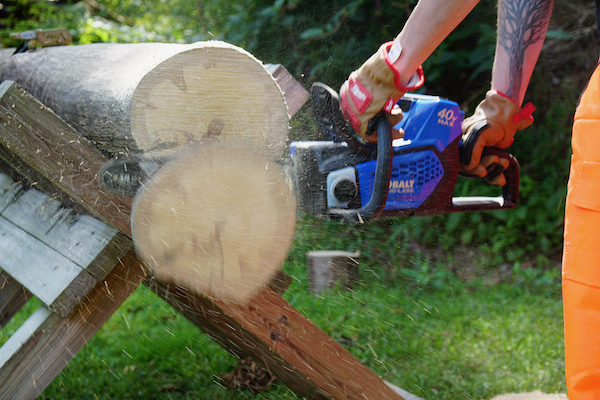
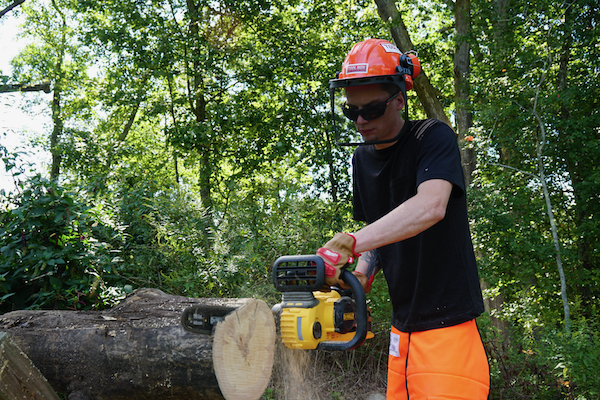
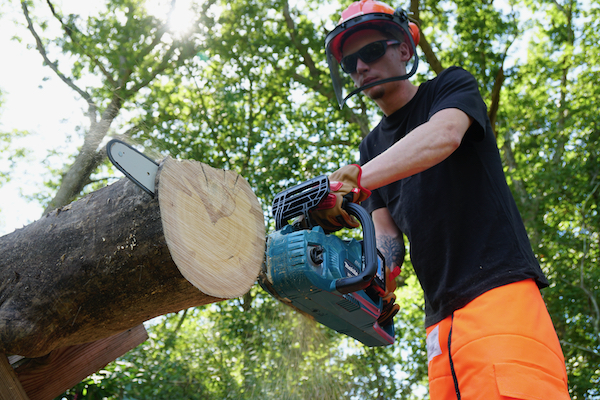
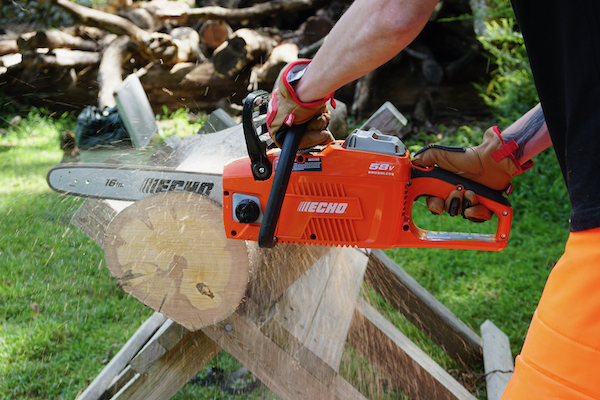

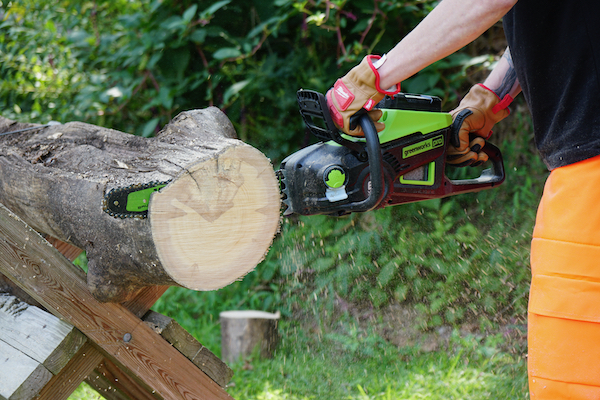
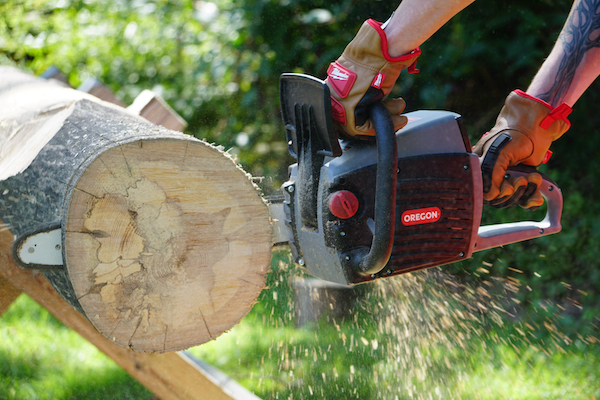
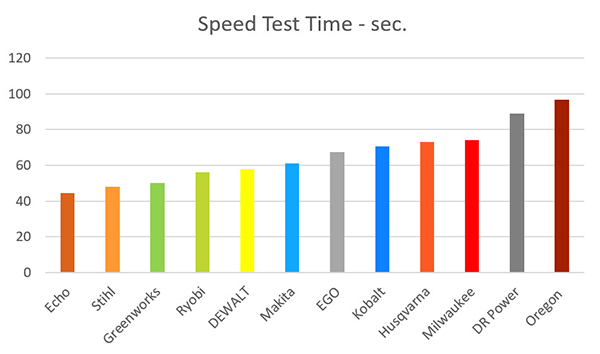
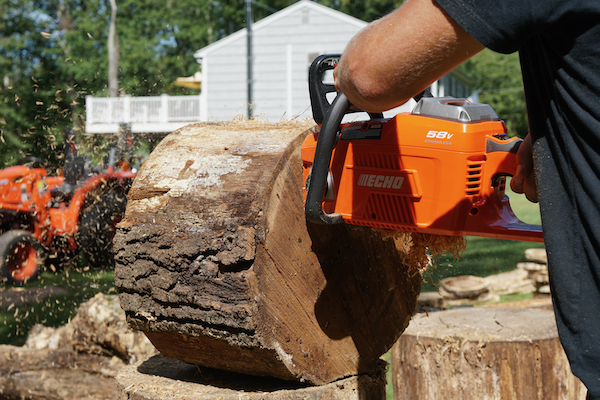
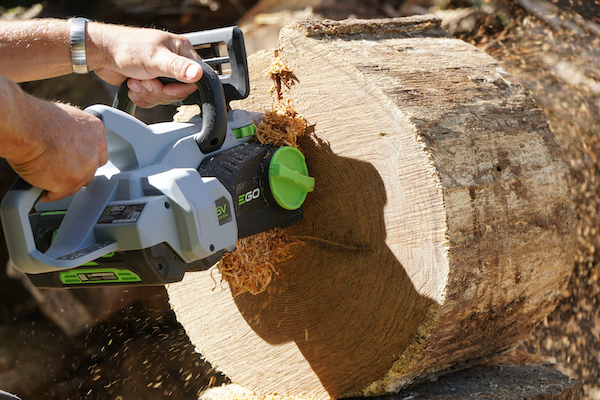
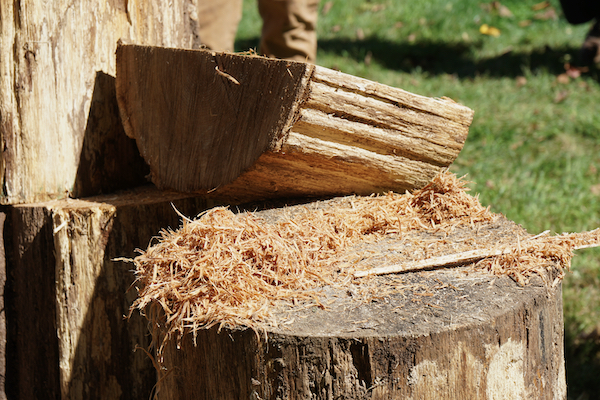
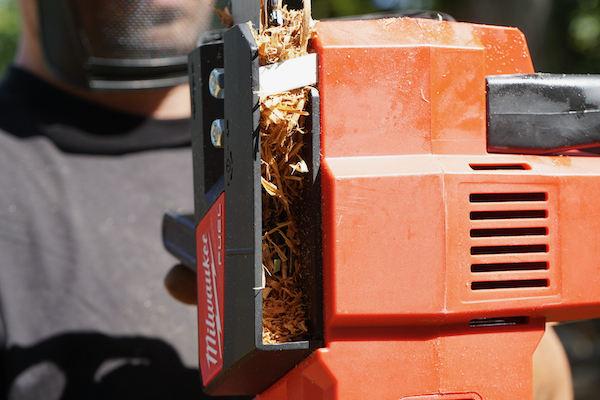
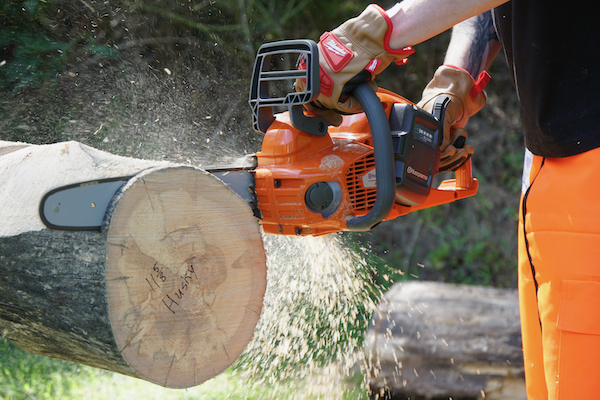
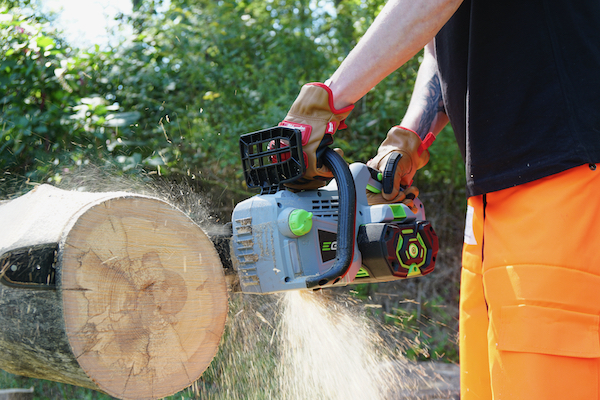

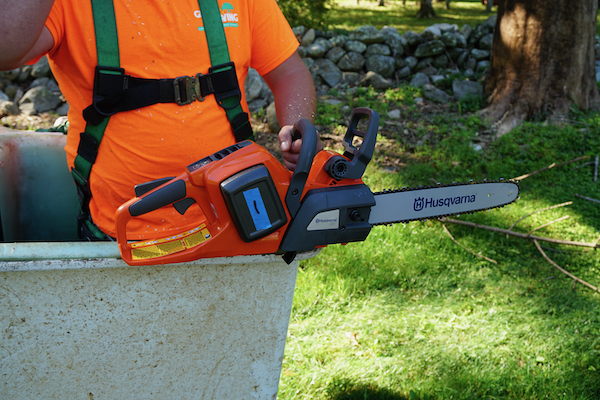
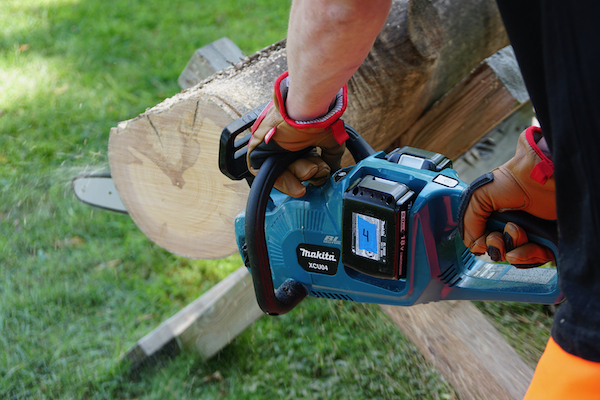
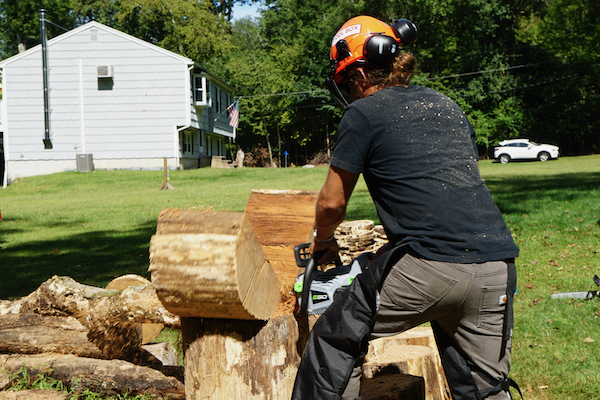
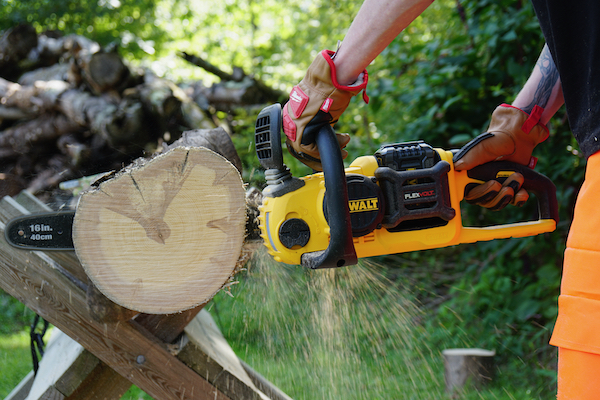
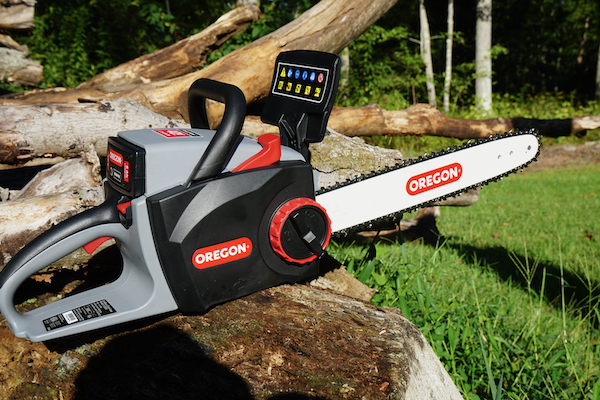
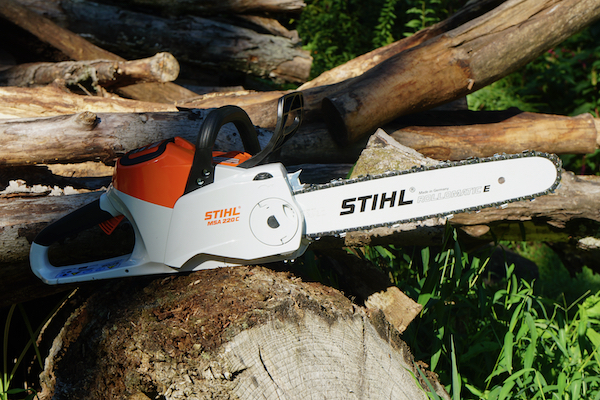
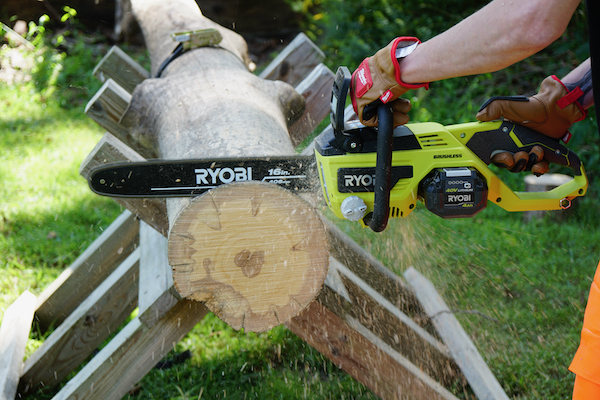
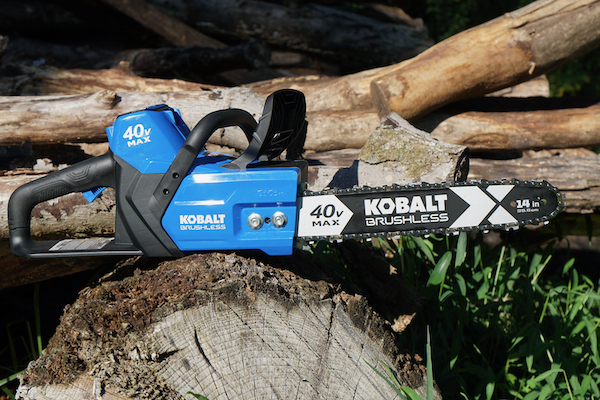
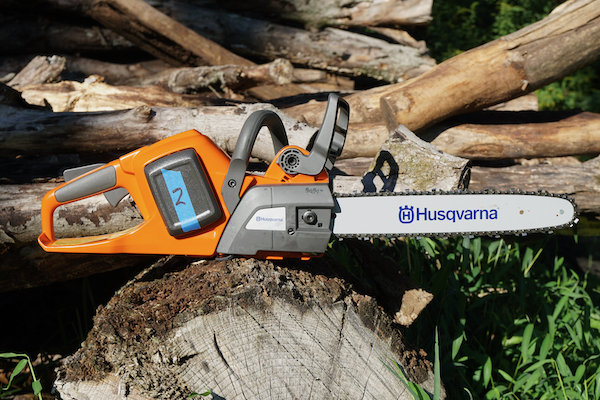
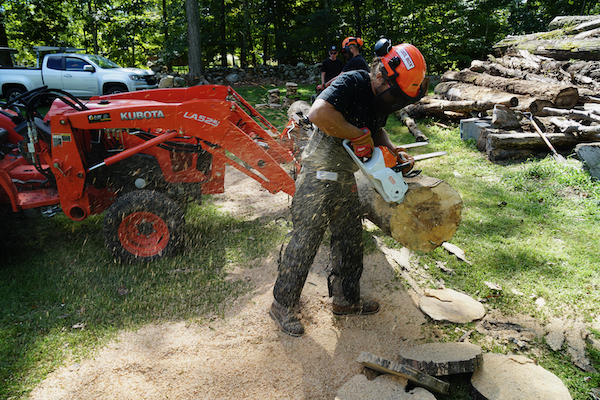
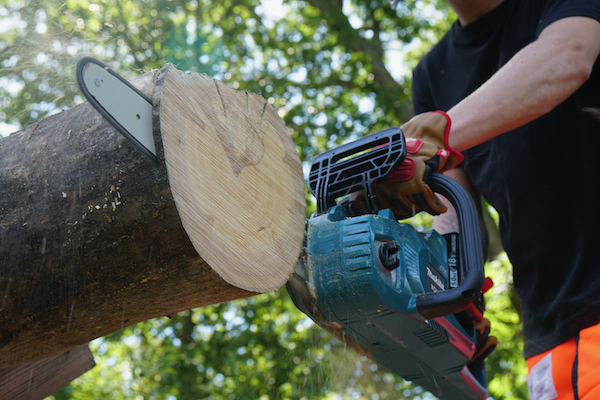
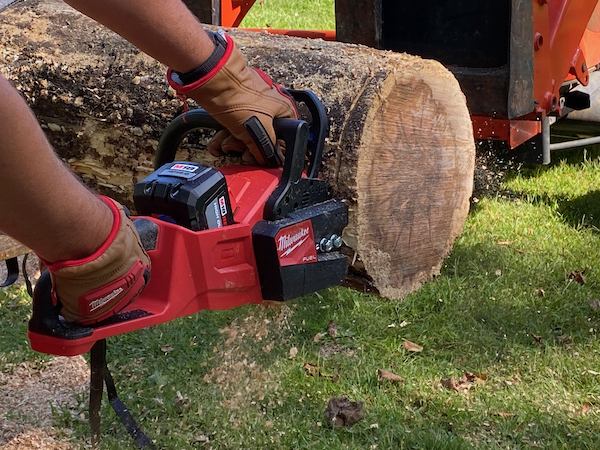
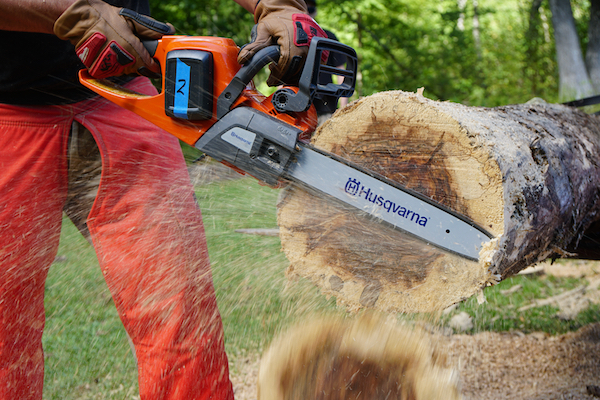
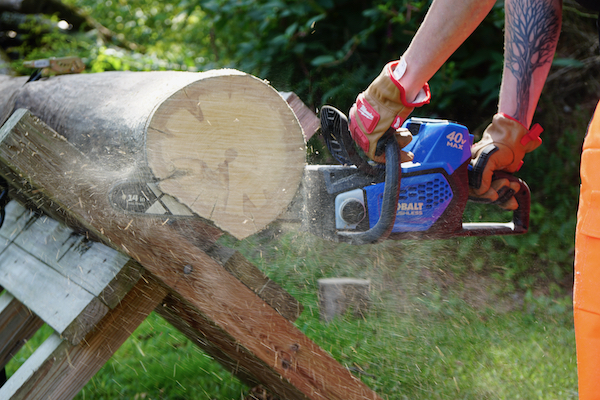
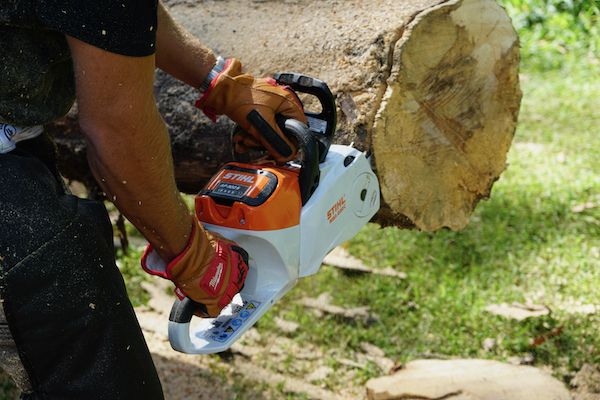

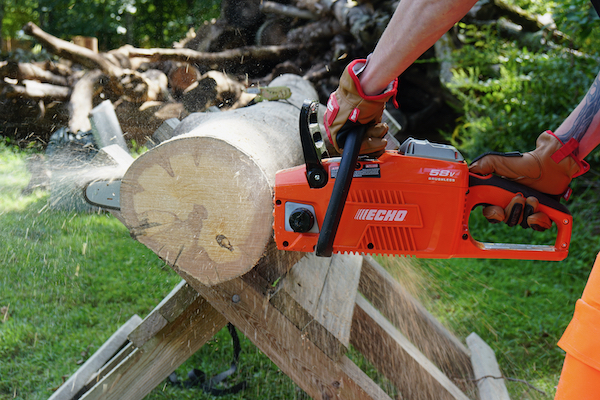
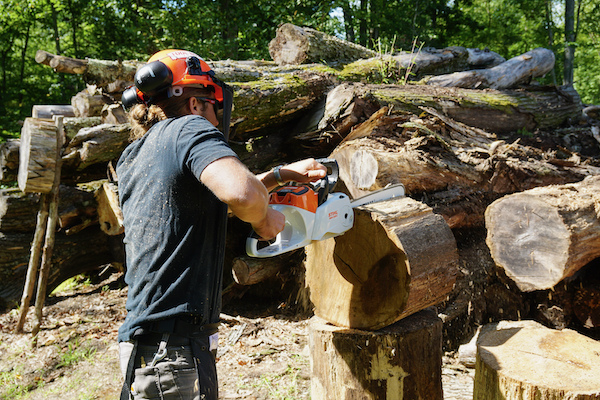

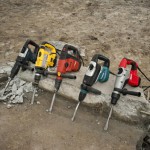

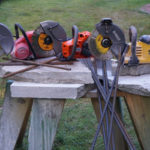
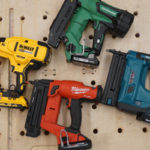












what about batteries and the warranty provided. The downfall of any coordless tool is the battery, while some seem to last over time (not between charge)all eventually become useless and the only choice becomes replacement. Ridged with their lifetime replacement hopefully will offer higher voltage products soon
John – We’ve discussed this a bunch of times but I’m happy to share my thoughts again. About a year ago I set out to do an in-depth comparison of warranties, several tool companies laughed at me and said good luck. Well after spending FAR too much time researching I finally through in the towel. Comparing tool warranties would require a PHD or more! There are so many different programs depending on the type of tool, battery, accessory, etc that there is no way to compare.
In addition, with all our tests, we’re only looking at a comparison of new tools, we don’t have the, resources or people to do long term testing to compare batteries over time.
So ultimately many need to base their decisions based on their own experience of a Brand along with the info we publish.
I find the best test for batteries is the duel use in lawn mowers as most consumers cut their yards on a weekly basis using these batteries consistantly. With this much charge – use – charge we can see how long these batteries can take over time. I have a Kobalt 40V chain saw and lawn mower. I bought two mowers and a 5 Amp 3rd battery and used them resulting in they lasting 2.5 years before they would only charge half load. I contacted Kobalt and was sent battery replacements. Their warrenty was spot on and with the s/n of each battery with purchase date and copy of reciept only took a single phone call. Sweat!
Glad to hear about your positive experience with Kobalt.
I agree with you about the benefits of being able to swap batteries back and forth between mower and chainsaw or any other tool. That’s why I think it’s a much smarter decision to invest in a battery platform that supports all your needs instead of chasing individual best tools.
If there was one outdoor platform I’d chose, it’d be Ego. I have their zero turn, and it’s awesome. I also have their backpack blower and “generator.” I have to say though, I also have tools by Dewalt, Ryobi, Kobalt, Black & Decker, Milwaukee, Sun Joe, Greenworks, Dremel, Craftsman, Worx and many more. There’s no way I could settle with one platform. I am able to get around some by using battery adapters like a Dewalt to Black & Decker or Dewalt to Ryobi but multiple platforms is a way of life, and I don’t mind it. If there was one saw that was far superior, I wouldn’t hesitate to add another platform but I’m sure an Ego, Kobalt or Dewalt saw is more than enough for my needs.
The best way to make your lithium ion batteries last is to never store them fully charged. They degrade permanently much more quickly when fully charged. I always wait until the day I need them to charge them, and if I have to store them over the winter, I keep them with one bar or led light of power showing on battery level indicator. The battery has never been a downfall of any of my cordless tools, whether they’re made by Dewalt, Kobalt, Milwaukee, Greenworks, Black & Decker, Dremel, Craftsman, etc. Those are brands I currently own, and many have batteries that are several years old, with no sign of fading. Just do not store them fully charged, and you will be just fine. None of my brand-name batteries have failed yet. I can’t say the same for the 3rd party batteries I’ve tried, though some can be a very good value.
Battery life has not been an issue for the major tool companies. The bigger batteries are even better. Dewalt and Milwaukee seem best. Even in cold. The battery is more of an advantage than ever before.
A 2.0 amph has lasted me 5 to 7 years. Its ni cad an old type of battery cell that would have issues when not in use. There was a memory and corrosion issues. The flexvolt sys is my go to for power. I am a little disappointed with m18 HO batter trip out on high load… 2 years in and still works!
Great head-to-head TBB! Ive been waiting for someone to test these saws and you nailed it. Clear results, meaningful tests, and very useful information for buying my next saw. Best part might be bringing in the pro arborist for feedback. Keep up the good work – ive subscribed now!
One thought- why wasnt the new Husavarna 540i included? Its been available since may and improves on the 535/536i. Great review regardless!
Thanks! Each brand was given a size range and specific guidelines to help keep all the saws “similar”. I’m sure that’s why it wasn’t included.
Thank you so much for the review.
How do the Kobalt/Greenworks 80V saws compare in cutting speed/power? Are they as good as the Greenworks Pro 60V or better?
Dan, we did not include any of the 80V saw options in this Head-2-Head because only some of the manufacturers had an offering in that range. The larger saw category may be something we explore in the future. I do not have any personal experience with the 80V offerings, but it would make sense that they would be a larger more powerful tool than the 60V and under tools. The 80V saws all have larger motors and battery packs designed to accommodate the larger bar and chain sizes.
Thanks for your reply. I’d be curious about their performance because I think when people shop for a cordless saw, they’re not just looking at 60V saws. They might be considering all cordless saws. It would be helpful to see the performance of 80V saws even if only for comparison purposes. I know another review found the Dewalt 60V to outperform the Kobalt 80V saw, so I’d be curious what other reviewers find. Thanks for reviewing the saws!
Dan – Great feeback, I don’t disagree, but we have limited time and resources so we try hard to keep all the tools as close to “apples to apples” as possible. If we did this full time that would be a great expansion of what we do. Again thanks for the feedback.
I just wanted to update my comment. I found out that the current Kobalt 80V saw is much more powerful than the old Kobalt 80V saw that I have, which still isn’t bad at all. It’s great these saws are getting more powerful than ever. Perfect for homeowners.
I came across your site while doing chainsaw research. I really like this kind of article. Thanks Wes Bartosik.
Glad to hear you like it! Out of curiosity, did you end up buying a cordless saw?
This review was very helpful! I ended up purchasing the Dewalt as part of a plan to upgrade all my cordless system (I’ve got an old Craftsman set still chugging along but the batteries are all finally dying off).
After using it to help clean up some major ice storm damage on family property, I’m really impressed. I did a lot of cuts on blackjack, post oak, a red oak, and some hackberry trees and hardly put a dent in the battery life. It cut fast and quiet and it’s nice that when it’s off, and you’re not dragging brush around an idling saw or constantly re-starting it. The 8″ pole saw was a life-saver, too.
Thanks Wes, very thorough! I like how you handled the testing, even though it is easy to be biased or subjective, the cutting tests and run-time seem like a good fair test. I liked it so much I linked to your review, too! Thanks again
This was totally helpful April 2021, a few numbers have changed but this was great! I wouldn’t have had enough information to make the purchase I did without this video & article, especially in this time when everyone is back-ordered because of Covid-19! Thank You!
What about the problem of some of the saws throwing chains or constantly chains needing tension tightening? Is there a way to keep chains on without the loosening effect of the chain running? Were these taken into account or did some hold their tension remarkedly well?
We did not encounter this issue with any of the saws during testing. The Husqvarna saw had an issue at first with maintaining proper tension, but that ended up being a user/operator error issue and the clutch cover wasn’t seated properly. No issues with chain tension after that. I have never personally experienced a battery saw losing tension to the point that it will throw a chain and from speaking with the rest of the crew members currently running a battery saw they have not either.
I’ve owned a Kobalt 80V saw for many years, and I’ve never experienced any chain issues. Many of these saws use the same chains as gas saws, so there shouldn’t be any reason for an electric saw to experience more issues.
My Rioby needs constant chain adjustment.
Great post. But I would say there is no end to this as “Change” is a Law of Life. There are certainly different brand chainsaws and can be used as per their needs. You carry the one that best and can be used at everywhere.
In regards to runtime-cutting, one thing I like to look at, is not necessarily the amount of cuts each saw can make with their kitted battery, but rather how may nominal Watt hours each cut takes. Kinda like mpg in a car. This levels the playing field of the different voltages and capacity of kitted batteries.
For example, the M18 saw made 21.7 cuts with a 216Wh (18v x 12Ah) battery, that is right around 10Wh per cut. Now the DeWalt was just behind the M18 with 20 cuts, but it was only using a 162Wh (54v x 3Ah) battery, so it only used about 8.1Wh per cut. So while the Milwaukee got more total cuts, it was due to its larger Wh pack. The DeWalt was actually more “fuel efficient” than even the first place EGO (31.3 cuts at 280Wh = 8.95Wh per cut).
I used to swear by Stihl but now I swear at them. I’ve got a little Stihl saw getting a ‘service’ at the moment (for the last time). Poor old Stihl is POS. I’ve heard nothing but rapturous reports about Echo products including my own son (weedeater), local tree loppers (chainsaws) and garden maintainence people. I’ve just go to find a local dealer here in the Blue Mountains of NSW, Australia.
[…] source: 36V Li-Ion Battery Weight: 6.4 Lbs. Bare ToolIn September 2020, ToolBoxBuzz published our Best Cordless Chainsaw Head-2-Head test. The Stihl Model MSA220C-B cordless chainsaw shined as our overall winner during this test. It […]
After trying Dewalt’s latest DCCS677 chainsaw with the included 15Ah battery (5Ah at 60V) and Ego’s CS1804 chainsaw, I can saw without a doubt that I prefer the Ego. The Dewalt looks great on paper, claiming that it exceeds 50cc performance but in real life, it’s impractical for me. I originally bought the Dewalt because I have a bunch of 3rd party 12Ah 60V max batteries but when I tried to use them with the Dewalt, it felt so weak. Dewalt’s DCB615 is ridiculously expensive for the 278Wh it holds. Ego includes a 259Wh battery (the 5Ah) with the kit, and it retails for almost half of what Dewalt charges for the DCB615, which is their largest battery. Ego has batteries as large as 620Wh. The Dewalt saw itself doesn’t feel that powerful even with the DCB615. Also, as of the end of 2022, there is nowhere you can buy a chain for the Dewalt. Oregon doesn’t even make a chain for it yet. The Ego has $11 Oregon chains all day. I got rid of the Dewalt, and I’m thoroughly enjoying the Ego. Also, I still have my 1st gen Kobalt 80V saw that I love but the new tool itch got to me. I’ll keep it as a backup. Anyway, if the lower-powered Ego won the competition here, its big brother can only be better.
Great article! I live in the mountains in California. I’m looking at purchasing my first chainsaw in the next week or so and have been researching articles online. Some of them are enough to make your head spin. Your article was well-organized, easy to read and very informative all the way through. I particularly liked the bar graphs that followed the descriptions as they kept everything in perspective. Thanks for your help! Very much appreciated!
[…] out our Cordless Chain Saw Head-To-Head for much more in-depth information on cordless chainsaws! During that test, the original DEWALT […]
Thanks